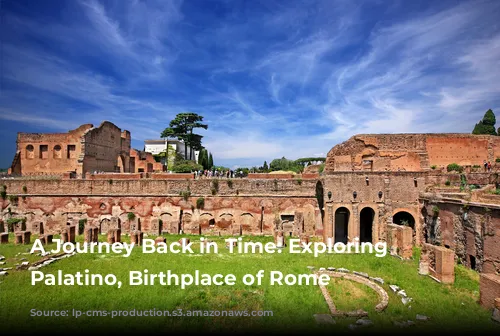Imagine standing on a hill overlooking the heart of ancient Rome, surrounded by the whispers of emperors and the echoes of a bygone era. This is the Palatino, a place steeped in history and breathtaking beauty. This majestic hill, nestled within the sprawling landscape of Rome, is not just a place of awe-inspiring ruins but a portal to the very genesis of the Eternal City.
The Foundation of an Empire
The Palatino, one of Rome’s seven legendary hills, holds the key to the city’s beginnings. Legends narrate that Romulus, the mythical founder of Rome, established the city here in 753 BCE. While some embrace this romantic tale, archaeologists have unearthed tangible proof of Iron Age settlements on the hill, dating back to the 9th century BCE. Regardless of the specific origins, the Palatino’s significance in Rome’s history is undeniable.
By the 1st century BCE, the hill had become Rome’s most exclusive neighborhood. Its refreshing air and vantage point above the Roman Forum attracted the city’s elite. Wealthy patricians built their grand homes here, and emperors followed suit. Augustus, the first Roman emperor, resided on the Palatino throughout his life, setting a trend that would continue for centuries. In fact, the word “palace” is derived from the hill’s Latin name, “Palatium,” a testament to its regal status.
The Echoes of Empire: Exploring the Palatino’s Ruins
Today, the Palatino offers a captivating glimpse into the grandeur of Roman emperors’ lives. Archaeological digs have revealed the ruins of a 1st-century CE royal residence, the primary imperial palace for over 300 years. Though deciphering the ruins can be challenging, a guided journey unveils the splendor of the past.
The Domus Flavia, the public part of the palace, is a must-see. Imagine walking through its grand courtyard, the peristilio, envisioning the emperors’ presence in the aula Regia, their audience chamber, and the basilica, where they presided over legal matters.
A short distance away, the Casa di Livia, the home of Augustus’ wife, and the Casa di Augusto, Augustus’ private residence, offer a glimpse into the emperors’ domestic life. The Casa di Augusto, with its magnificent frescoes, requires a guided tour and a specific ticket for access.
A Journey Through Time: Beyond the Imperial Palace
As you venture further, you’ll encounter the Villaggio di Capanne, the oldest section of the Palatino. Legend has it that this is where Romulus and Remus, the mythical founders of Rome, were raised by a shepherd. This site, though closed to visitors, adds another layer to the Palatino’s captivating narrative.
The Orti Farnesiani, a 16th-century botanical garden, provides a tranquil escape amidst the ruins. From its monumental balcony, you can revel in breathtaking panoramas of the Roman Forum, a truly captivating experience.
The Domus Augustana, the private portion of the emperor’s palace, offers further glimpses into the opulence of Roman emperors. The remains of a square water feature and sweeping views of the Circo Massimo (Circus Maximus) remind us of the grandeur that once defined this space.
The Palatino: A Must-See for Every Roman Traveler
The Palatino is not just a collection of ruins; it is a living testament to the rise and fall of an empire. Its towering pines, majestic ruins, and captivating views offer a truly immersive journey through time.
Whether you’re captivated by Roman legends, intrigued by archaeological discoveries, or simply seeking a breathtaking view of the Eternal City, the Palatino will surely leave an unforgettable mark on your heart.
